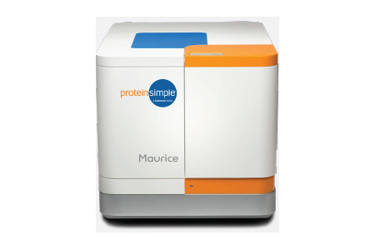Characterization Of Adeno-Associated Viral (AAV) Vector Proteins Using Maurice CE-SDS

The concept of gene therapy is straightforward in principle—find the gene(s) responsible for a specific disease state, introduce the proper copy, “fix” or normalize expression and rectify the ailment. In other words, use genes as medicine. Recent advances in vector engineering, delivery and safety have placed viral vector-based therapy at the forefront of gene therapy, with adeno-associated virus (AAV) being one of the most actively investigated. To that end, the first such gene therapy approved by the United States Food and Drug Administration (FDA), voretigene neparvovec-rzyl (Luxturna™), is an AAV serotype 2-based gene therapy for the treatment of mutation-associated blindness¹. Another AAV-based drug treating X-linked retinal dystrophy is set to hit the market in the near future². Beyond eye diseases, AAV-based gene delivery strategies are being applied in more than 200 clinical trials around the globe for diseases and disorders like hemophilia A and B, human immunodeficiency virus (HIV) infection, Parkinson’s and Batten Disease, among others³.
To support the rise of AAV vectors in the clinic, technological solutions that afford robust quality control assays are essential for implementing Good Manufacturing Practice (GMP), meeting regulatory requirements and ensuring the clinical quality, safety and consistency. In this application note, we demonstrate how capillary electrophoresis sodium dodecyl sulfate (CE-SDS) can ensure these requirements are met. The state-of-art Maurice™ system delivers CE-SDS analysis with excellent specificity, linearity, repeatability and quantification of your AAV samples, and with the ability to detect impurities.
Request A Quote
Get unlimited access to:
Enter your credentials below to log in. Not yet a member of Bioprocess Online? Subscribe today.
